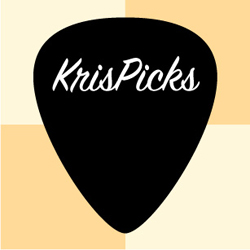As a street musician, the probability of having to travel with your instrument is quite high. Many street musicians choose to use public transport to keep costs low. However, we’re often left lugging heavy instruments with us onto the bus or train in the hopes of getting to our next gig on time. Here are some tips on how to travel as a street musician so that you can get around more easily.
Do You Need Your Instrument?
Sometimes you may want to play a bit of acapella. On those days, do you really need to take your instrument with you? The answer will more than likely always be yes, but on those rare occasions, you should leave your instrument at home. Don’t be tempted to take it with you just in case. It will make the whole journey a lot easier.
Plan It Out
Traveling as a street musician takes careful planning. It’s such a vital part of getting around safely and on time. Buses and trains both have steps and gates that make it difficult to carry larger instruments around with you. Make sure you are considering what instruments and kit you need for the day, and plan your trip accordingly.
Regardless of what method of transportation you are using, you should check on baggage policies first. Many forms of transports will have weight and size restrictions, impeding you from traveling as a musician. Knowing you can take your gear and instrument with you before you set out could save you a lot of time down the road.
Another thing you may want to look into as a street musician is insuring your instrument. Our instruments are expensive, and unfortunately, damage can happen when we travel with them. If something does happen, having insurance in place means you won’t be left without your most prized possession.
Buy a Hard Case
Instruments that aren’t appropriately protected will get damaged when you’re traveling as a street musician. Soft cases are more comfortable to carry and won’t be as heavy, but sometimes your comfort has to go out the window to save the cargo inside. If you don’t already have a hard case, now is the time to get one. This is especially important if luggage handlers will be involved. Hard cases also protect your instrument from the elements like rain and snow that could otherwise damage it.
Buying a hard case is relatively straightforward. Your instrument should fit snugly into it without you having to apply any force. Browse online reviews and find the right case for you.
Add Additional Padding
If you already have a hard case, but it isn’t the perfect fit, you don’t need to go and buy a new one. Instead, use your improvisational skills and add in some extra padding. This could be old clothes, bubble wrap, or even bed covers. Whatever keeps your instrument in the right place and stops it banging about inside the case does the job nicely.
Plan Your Time
Some street musicians have to work under time constraints as you can only play in public between certain hours of the day. If this is the case, you need to plan your time strategically. Try to arrive early and add in extra time for traveling with an instrument and gear. Having this spare time will also help you deal with any setbacks you may encounter, like tricky train ticket gates, without getting too stressed out.
Pack Some Snacks
Being a street musician is hard work, and you’ll be out there all day, playing your music for the masses. Take with you as many snacks as you can. Instrument cases are a wonderful place to store your favorite snack items, especially if your journey is a long one.
Stay Fit
If you have a heavy instrument as a street musician, you need to have the muscles to carry it. Not only will you need to carry it with you, but you will also need to think about the strength required to store it in luggage racks on trains and buses. The best thing you can do here is to prepare for the weight and keep yourself fit. Whatever it takes will help massively.
Beware Of Others
Unfortunately, we live in a world where people aren’t sympathetic to our journey as musicians carrying an instrument. Non-musicians will tend to react badly if you hit them with a sharp corner of your case. You need to be prepared for the complaints and not take them to heart. Traveling as a street musician is hard work, so don’t let the general public get you down.
Plan to Handle It Alone
There won’t be anyone to help you carry your instrument and gear as a solo street musician. You are utterly alone in this situation and have to plan accordingly. Make sure you are capable of lifting and carrying everything you are taking with you.
Use Your Kit As An Advantage
Sometimes we are stuck on train platforms or bus stations because of long delays. Now, this is where your kit can actually come in handy. Use it to perch on and take the weight off your feet while you can. You’ll soon be on your way again, and your body will be thankful for the rest.
Embrace the Experience
It takes someone genuinely passionate about being a street musician to undergo public transport and travel like this. Remember that traveling is a necessary evil of sharing your music with others, and it’s just a small part of the overall experience. Good luck on your travels!






